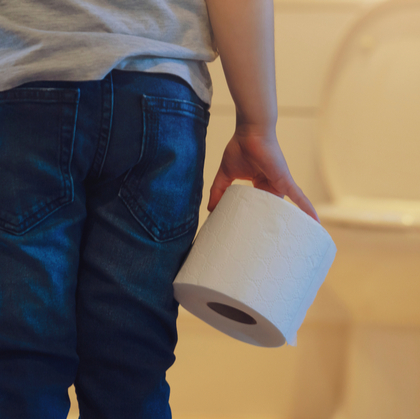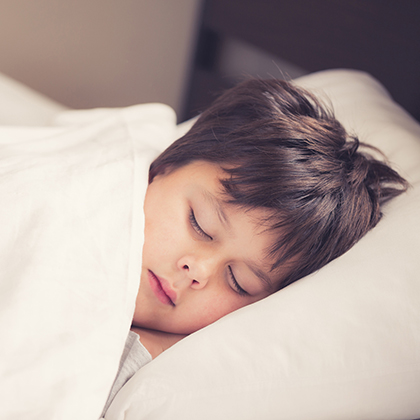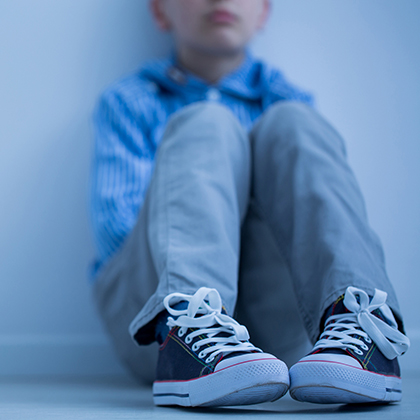
If your baby’s nappy area looks red, sore and inflamed, there’s a pretty good chance they have nappy rash. It is, after all, very common, with around one in four babies and toddlers experiencing nappy rash at any one time (i).
All babies and children who wear nappies can get nappy rash. According to the National Institute of Health and Care Excellence (NICE), babes aged between nine and 12 months of age are the most likely to be affected, with newborns less likely to develop nappy rash (ii). Babies born prematurely, however, have an increased risk of getting nappy rash because their skin has an under-developed barrier function (iii). But nappy rash doesn’t affect babies exclusively. Older children and adults who use incontinence products can develop it too.
What is nappy rash?
Also called irritant contact dermatitis – or napkin or diaper dermatitis in other parts of the world – nappy rash is the term we use here in the UK to describe various problems that affect the skin under a nappy. It can start with one or two small patches and gradually spread, or it may appear suddenly.
-
In mild cases the skin around the affected area (genitals, bottom, lower abdomen and inside of the thighs) can look pink or red (though this can be more difficult to spot on darker skin) and blotchy or spotty, plus it can feel hot to the touch.
-
If the rash persists it may start to look swollen and more sore, with small ulcers or blisters forming.
According to the NHS most babies with mild nappy rash aren’t upset by it, though they may become distressed or agitated and feel uncomfortable if the rash develops and becomes painful and itchy (i). You may, for instance, find that they become more irritable or fussy during nappy changes or they may cry while urinating, or they may just seem a bit unhappy and out of sorts in general.
How long does nappy rash last?
The good news is that a mild to moderate nappy rash will usually start to get better within three to four days if you treat it appropriately, though a more severe case may take up to a week before it starts to heal (iv).
What causes nappy rash?
Babies have incredibly soft skin, but it’s also thinner and more sensitive than adult skin, which means the skin barrier – the outermost layer of the skin – can become more easily irritated and damaged. This can leave them more susceptible to nappy rash as well as other skin problems.
Most cases of nappy rash are caused when the skin reacts to urine and faeces. Leaving a baby in a wet or soiled nappy for too long can make this more likely to happen, but babies with particularly sensitive skin can develop nappy rash even when they are changed quickly and frequently.
All nappies – even the most absorbent ones – can leave some moisture on a baby’s skin that could potentially cause irritation, plus nappies that are too tight can rub against the skin and cause chafing. However many experts believe nappy rash is more of a problem for babies wearing traditional cloth nappies – which are becoming increasingly popular again as they’re more environmentally friendly – and that it is less widespread in those wearing modern breathable and multilayered disposable ones (v).
Other things that can cause or contribute to nappy rash include:
-
Tight-fitting plastic pants worn over nappies
-
Nappy type – some babies’ skin can react to certain brands of disposable nappies or cloth nappies washed in certain brands of washing powder
-
Not cleaning the nappy area properly at every change (over-vigorous cleaning, on the other hand, can also cause problems)
-
Using soap or bubble bath
-
Using alcohol-based or perfumed baby wipes
-
Using talcum powder
-
Certain medicines such as antibiotics or laxatives (antibiotics can, for instance, cause fungal nappy rash – read on for more details)
* Overwashing (this can dry a baby’s skin out)
-
Medical conditions such as diarrhoea, gastroenteritis and liver conditions (iii)
-
Teething (this may be a result of producing more saliva) (vi)
Secondary infections
If a nappy rash doesn’t start to get better within three days or so, there’s a chance it has developed into a fungal or bacterial skin infection.
Experts believe that after 48 hours nappy rash is commonly infected with Candida (vii) – a yeast (a type of fungus) that normally lives on the skin and inside the body in small amounts without causing any problems. Increased moisture and skin irritation caused by a wet or soiled nappy, however, can cause an overgrowth of Candida, which results in a fungal nappy rash infection.
If your baby has a fungal nappy rash, you may notice the following:
-
Fine, scaly, bright red raised patches, typically in the skin folds around the tops of the things and the groin
-
Small, raised cysts or fluid-filled blisters and pus-filled spots around the rash
Meanwhile the inflamed skin of a nappy rash can also become infected with germs such as staphylococcal or streptococcal bacteria, causing blisters and pus-filled spots. Even with the right treatment both of these types of nappy rash infections can take longer than normal nappy rash to clear up, and like normal nappy rash they can come back again.
What else could nappy rash be?
Rash-like symptoms in the nappy area are usually described as nappy rash, but occasionally they can be caused by something else, such as:
-
Seborrhoeic dermatitis This usually causes an itchy, flaky scalp that can be accompanied by a red, scaly and weeping rash. Parts of the body that can be affected include the face, chest and upper back, as well as the nappy area in babies. When it affects the nappy area it typically causes well-defined areas of redness with scaly pus-filled spots, including in the skin folds. According to NICE, it most commonly affects babies aged two weeks to six months old (viii).
-
Lichen sclerosus If you have a baby girl with itchy ivory-white patches in their nappy area – typically in a figure-of-eight pattern – the condition is likely to be lichen sclerosus rather than nappy rash. Other symptoms include bleeding, itching and pain. In male babies, lichen sclerosis can affect the penis foreskin.
-
Heat rash This itchy rash is the result of heat and humidity under the nappy blocking the sweat ducts. The rash typically presents as multiple red spots that look like little pin pricks, particularly around the thighs where the elastic of disposable nappies comes into contact with the skin.
-
Scabies Caused by a tiny mite, scabies is a very itchy, contagious skin condition that can affect the nappy area as well as other parts of the body. If another family member has scabies, it can affect the rest of the family too – including babies and young children – as it is spread by close skin contact. Other areas of the body often affected by scabies include the wrists, ankles, fingers, toes, palms and soles of the feet.
-
Zinc deficiency According to NICE this is more common in premature babies. It causes red patches and scaly plaques, and is often accompanied by diarrhoea and poor growth (viii).
-
Psoriasis This skin condition isn’t common in babies, but it can occasionally be found in the folds of babies’ groins as well as in the cleft between their buttocks. Psoriasis can cause nappy rash-type symptoms in these areas including a bright red rash – though the silvery white scales that are usually a typical psoriasis symptom aren’t usually present. If a baby has psoriasis they may also have a rash elsewhere too, including on their scalp, trunk, around their navel and on areas of skin around their joints, such as the front of their knees or the back of their elbows.
-
Eczema If your baby has eczema they may not have any symptoms in their nappy area as the skin here tends to be well hydrated rather than dry. However now and then eczema can cause a rash that looks like nappy rash – if the rash is down to eczema your baby may have a rash elsewhere too, typically in one or more of the creases or folds of their body.
There are several other things that can cause more general skin rashes in children. Find out more about some of the most common ones and what you can do to soothe them by reading our guide to rashes and itchy skin in children.
How to prevent nappy rash
Many of the steps you can take to treat nappy rash can stop it from coming back too. If your baby’s nappy rash is mild, you usually can tackle the problem yourself at home. Here are some of the things you should do:
-
If you’ve been using traditional cloth nappies, consider switching to a disposable gel matrix nappy with high absorbency at least until the rash is under control. That’s because these disposable nappies are more absorbent than cloth nappies, which means they’re better at keeping moisture away from your baby’s skin. However, an increasing number of parents are avoiding using disposable nappies because of their impact on the environment. So if you don’t want to use them at all, try adding absorbent cloth nappy inserts or boosters to your cloth nappies to improve absorbency.
Also try to make sure washable nappies are rinsed thoroughly. This will help get rid of any washing powder or bleach residue that could irritate your baby’s skin.
-
Make sure your nappies fit your baby properly – if they’re too tight they can cause friction, and if they’re too loose they won’t absorb moisture effectively.
-
Avoid using tight-fitting plastic or waterproof pants over nappies.
-
Try to leave their nappy off whenever you can every day. This helps the skin of the nappy area to dry thoroughly. Just lie your baby on a towel or an absorbent sheet without their nappy to let the fresh air get to their skin.
-
Change your baby’s nappy frequently. NICE experts recommend changing a nappy every three to four hours or as soon as possible after wetting or soiling (ix) – the aim is to make sure their skin is in contact with urine and/or faeces for a short a time as possible. According to the NHS, young babies may need changing up to 10 or 12 times a day, with older babies needing changing around six to eight times a day (x).
* Every time you change their nappy, clean their skin using warm water and cotton wool or by using fragrance-free and alcohol-free baby wipes. Gently clean and pat dry the entire nappy area including inside the folds of the skin (make sure girls are cleaned from front to back to prevent bacteria getting into their vagina).
-
Use a barrier cream or ointment to protect your baby’s skin after cleaning them. These help protect your baby’s skin from being affected by moisture from urine and faeces. However you only need to apply a thin layer just before you put on a clean nappy. Recommended barrier ointments include zinc and castor oil ointment, Metanium, soft white paraffin ointment and Bepanthem ointment (xi).
-
Bath your baby every day, but try to avoid bathing them more often, as it can dry out their skin. At the same time avoid using soap, bubble bath, lotions or talcum powder, all of which can irritate a baby’s skin.
-
Wash your hands before and after changing a nappy.
Keep following the above steps to reduce the risk of nappy rash coming back again.
When to see a GP
If your baby has a rash that doesn’t go away or one that looks sore or inflamed and is causing them discomfort, ask a pharmacist or your health visitor for advice. They may, for instance, suggest you give them specially formulated baby paracetamol (do not give paracetamol to babies aged two months or younger and always follow the instructions on the bottle).
Nappy rash treatment
If their rash is severe, take your baby to see their GP who may prescribe cream or medicine to help clear it up. Depending on how bad the rash is or what the suspected cause is, your GP may prescribe one of the following:
-
Hydrocortisone cream to treat the inflammation (use until the rash gets better or for a maximum of seven days – apply sparingly as often as prescribed and wait a few minutes before using barrier cream)
-
Anti-fungal cream to treat Candida (this should typically be used for an additional seven to 10 days after the rash has cleared up to make sure that all the fungus has gone)
-
A combination of hydrocortisone and anti-fungal cream
-
Antibiotic medicines to treat a bacterial infection, which may be the cause of a rash that won’t go away
Meanwhile if any of the following is affecting your baby, get an urgent same-day appointment to see their GP or take them to your nearest A&E department:
-
They are younger than three months of age and have a temperature of 38C or higher, or if they’re three to six months of age with a fever of 39C or higher
-
They have a poor appetite and are having fewer than half of their usual feeds
-
They aren’t passing as much urine as usual (fewer than three wet nappies in 24 hours)
-
They seem very irritable and aren’t comforted by feeds or by paracetamol
Find out more about nappy rash
Nappy rash may be common but it can be distressing for babies as well as parents. The good news is that most cases are mild and easily treated as well as prevented at home by adopting good hygiene practices. Read more about a range of children’s health issues by visiting our pharmacy health library
References:
(i) Available online: https://www.nhs.uk/conditions/baby/caring-for-a-newborn/nappy-rash/(ii) Available online: https://cks.nice.org.uk/topics/nappy-rash/background-information/prevalence/
(iii) Available online: https://cks.nice.org.uk/topics/nappy-rash/background-information/risk-factors/
(iv) Available online: https://kingstonhospital.nhs.uk/wp-content/uploads/2021/04/A0124-Nappy-rash.pdf
(v) Available online: https://dermnetnz.org/topics/napkin-dermatitis
(vi) Available online: https://patient.info/childrens-health/nappy-rash-leaflet
(vii) Available online: https://www.hct.nhs.uk/children-and-families/minor-illness/management-of-nappy-rash/
(viii) Available online: https://cks.nice.org.uk/topics/nappy-rash/diagnosis/differential-diagnosis/
(ix) Available online: https://cks.nice.org.uk/topics/nappy-rash/management/management/
(x) Available online: https://www.nhs.uk/conditions/baby/caring-for-a-newborn/how-to-change-your-babys-nappy/
(xi) Available online: https://patient.info/childrens-health/nappy-rash-leaflet
?
Related Posts
Disclaimer: The information presented by Nature's Best is for informational purposes only. It is based on scientific studies (human, animal, or in vitro), clinical experience, or traditional usage as cited in each article. The results reported may not necessarily occur in all individuals. Self-treatment is not recommended for life-threatening conditions that require medical treatment under a doctor's care. For many of the conditions discussed, treatment with prescription or over the counter medication is also available. Consult your doctor, practitioner, and/or pharmacist for any health problem and before using any supplements or before making any changes in prescribed medications.

Christine
Christine Morgan has been a freelance health and wellbeing journalist for almost 20 years, having written for numerous publications including the Daily Mirror, S Magazine, Top Sante, Healthy, Woman & Home, Zest, Allergy, Healthy Times and Pregnancy & Birth; she has also edited several titles such as Women’ Health, Shine’s Real Health & Beauty and All About Health.
View More



